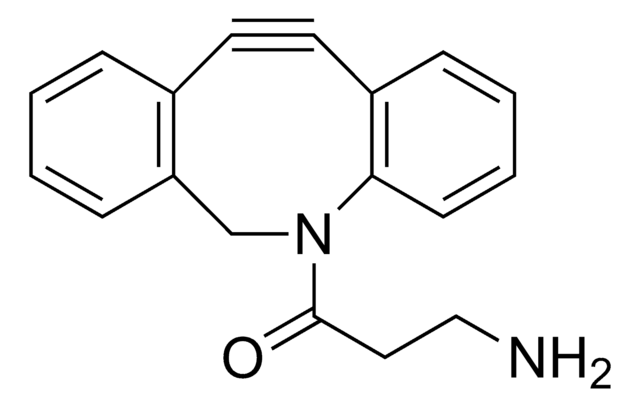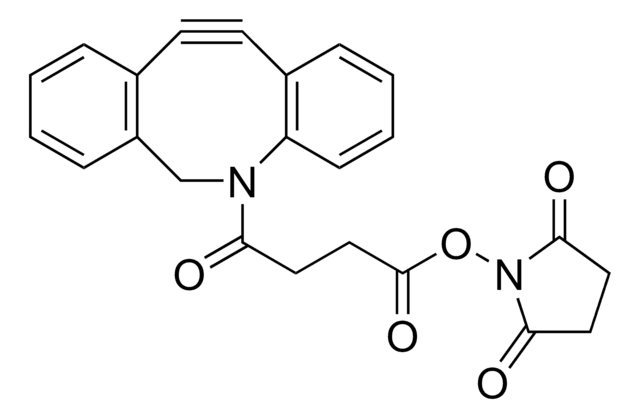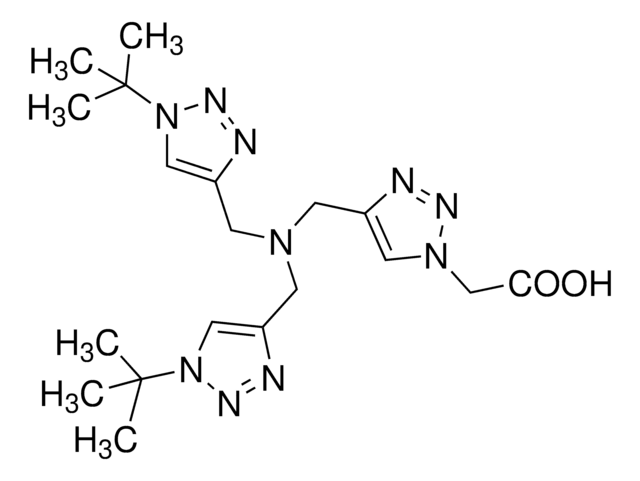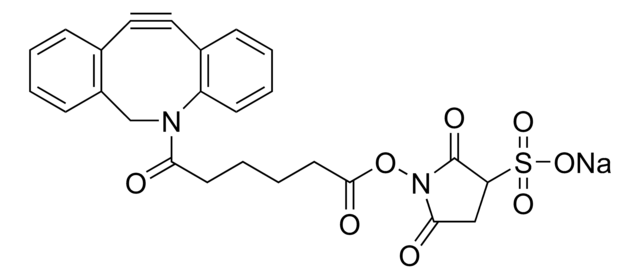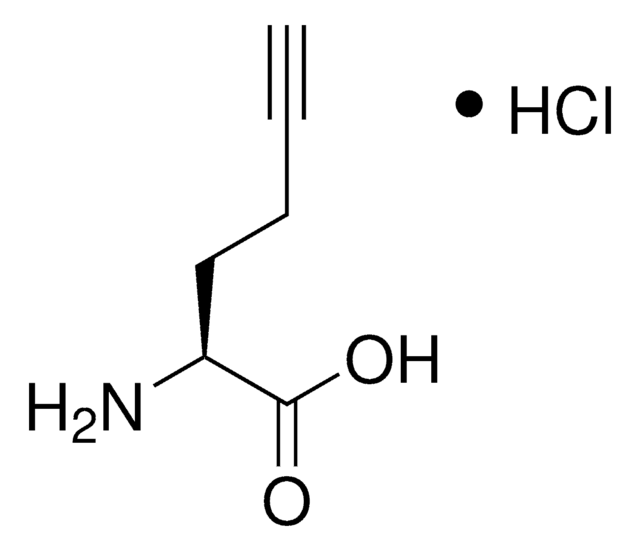Wichtige Dokumente
762342
Tris(3-hydroxypropyltriazolylmethyl)amin
95%
Synonym(e):
3,3′,3′′-(4,4′,4′′-(Nitrilotris(methylen))tris(1H-1,2,3-triazol-4,1-diyl))tris(propan-1-ol), THPTA
About This Item
Empfohlene Produkte
Qualitätsniveau
Assay
95%
Form
solid
Eignung der Reaktion
reaction type: click chemistry
mp (Schmelzpunkt)
331-336 °C (decomposition)
Lagertemp.
2-8°C
SMILES String
OCCCN1N=NC(CN(CC2=CN(CCCO)N=N2)CC3=CN(CCCO)N=N3)=C1
InChI
1S/C18H30N10O3/c29-7-1-4-26-13-16(19-22-26)10-25(11-17-14-27(23-20-17)5-2-8-30)12-18-15-28(24-21-18)6-3-9-31/h13-15,29-31H,1-12H2
InChIKey
VAKXPQHQQNOUEZ-UHFFFAOYSA-N
Anwendung
Ähnliches Produkt
Signalwort
Warning
H-Sätze
Gefahreneinstufungen
Eye Irrit. 2 - Skin Irrit. 2 - STOT SE 3
Zielorgane
Respiratory system
Lagerklassenschlüssel
11 - Combustible Solids
WGK
WGK 3
Flammpunkt (°F)
Not applicable
Flammpunkt (°C)
Not applicable
Hier finden Sie alle aktuellen Versionen:
Besitzen Sie dieses Produkt bereits?
In der Dokumentenbibliothek finden Sie die Dokumentation zu den Produkten, die Sie kürzlich erworben haben.
Kunden haben sich ebenfalls angesehen
Unser Team von Wissenschaftlern verfügt über Erfahrung in allen Forschungsbereichen einschließlich Life Science, Materialwissenschaften, chemischer Synthese, Chromatographie, Analytik und vielen mehr..
Setzen Sie sich mit dem technischen Dienst in Verbindung.![Tris[(1-Benzyl-1H-1,2,3-Triazol-4-yl)methyl]amin 97%](/deepweb/assets/sigmaaldrich/product/structures/179/695/86a721c8-2a4c-4e4f-bc36-6276ce7a941f/640/86a721c8-2a4c-4e4f-bc36-6276ce7a941f.png)

